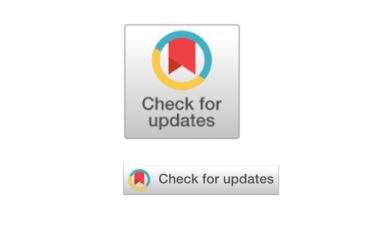Corrections, retractions and removals for journals
Post-publication notices
We use the following notices to alert readers to post-publication changes or updates to content. All post-publication notices are free to access and are bi-directionally linked to the article concerned.
Corrigenda and errata
Where articles are not seriously flawed but contain an editorially significant error or omission, the journal will issue a corrigendum or erratum. A corrigendum will be issued when the error or omission is the author’s responsibility, and an erratum when by the journal or publisher. Corrigenda and errata will bi-directionally link to the affected article and, where possible, will be published in the next available journal issue.
Cambridge may occasionally correct errors in articles which are editorially insignificant, but which significantly affect the usability of the article (for example, a typo in key metadata such as institution name or ORCID). We expect any such update to be transparently communicated through an appropriate notice, footnote, or other mechanism.
Retractions
A retraction is the rescinding of an editorial decision to publish. Retractions are usually reserved for articles that are so seriously flawed that their findings or conclusions should not be relied upon, or that contain substantial plagiarism or life-endangering content. The decision to issue a retraction for an article will be made in accordance with the COPE’s Retraction Guidelines , and will follow an investigation. Retractions are editorial decisions and will usually be made by the editorial governance of the journal. In rare circumstances (for example, in the event the journal has ceased publishing and no editor is available to make the decision or where the issue leading to the need for retraction was caused by Cambridge (e.g. erroneous duplicate publication), Cambridge as the publisher may, in consultation with relevant experts, issue a retraction. The party responsible for issuing the retraction will be made clear in the notice.
Expressions of Concern
If conclusive evidence about the reliability of a publication cannot be obtained from an investigation, or will not be obtained for a considerable time, but the nature of the concerns warrants notifying readers, the journal will consider publishing an expression of concern.
When the investigation is complete, the journal may publish a further notice, such as a retraction or corrigendum. All notices will remain part of the permanent published record.
If conclusive evidence about the reliability of a publication cannot be obtained from an investigation, or will not be obtained for a considerable time, but the nature of the concerns warrants notifying readers, the journal will consider publishing an expression of concern.
When the investigation is complete, the journal may publish a further notice, such as a retraction or corrigendum. All notices will remain part of the permanent published record.
Removal and withdrawals
In exceptional cases, we may remove an article from online publication where we believe it is necessary to comply with our legal obligations. This includes, without limitation, where we have concerns that the article is defamatory, violates personal privacy or confidentiality laws, is the subject of a court order, or might pose a serious health risk to the general public. In these circumstances, we will endeavour to publish a notice that clearly states why the full article has been removed, and we will retain the maximum metadata possible.
Addenda
Where it is necessary to add key information to a published article, the journal will issue an addendum. Addenda do not contradict the published article and are not used to fix errors. Addenda may be peer reviewed according to individual journal policies.
Post-publication discussions and critiques
In accordance with COPE Core Practices , we expect our journals to support post-publication discussion and critique of their published content. This may be through formal peer review and publication of Letters or response and rejoinder correspondence in the journal, commenting on Cambridge Core, or by engaging with and supporting discussion on a third-party platform such as PubPeer. Journals should have a clearly defined and transparent policy for considering submitted critiques.
Crossmark
Many of our journals participate in Crossmark , a multi-publisher initiative from CrossRef. The Crossmark widget informs the reader of the current status of a document, lists any changes that have occurred since publication, and provides additional information about its publication record at the click of a button. By applying the Crossmark widget, Cambridge University Press is committing to maintaining the content it publishes and to alerting readers to changes if and when they occur.
The Crossmark widgets, as shown below, will appear on both HTML and PDF versions of articles in participating journals. Clicking on the widget opens the article’s Crossmark record. This shows the reader the current status of the article.
Any linked post-publication notices, additional information or metadata Cambridge University Press has supplied to CrossRef will be noted in the article’s Crossmark record.


The Crossmark widgets, as shown below, will appear on both HTML and PDF versions of articles in participating journals. Clicking on the widget opens the article’s Crossmark record. This shows the reader the current status of the article.
Any linked post-publication notices, additional information or metadata Cambridge University Press has supplied to CrossRef will be noted in the article’s Crossmark record.
